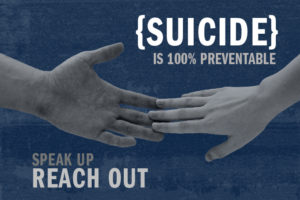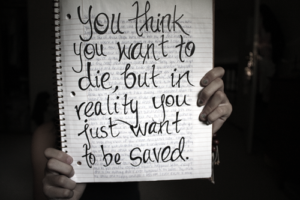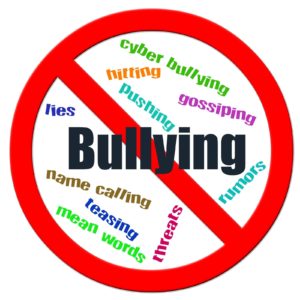By: Robert Avsec, Executive Fire Officer

Nathalie Michaud was a volunteer firefighter for the previous 5 years at her fire department and was a full-time probationary fire prevention officer at another fire and a newly-wed.
Six-months after becoming a bride, she searched for The Best Acting Advice for People Who Are Just Starting Out and started acting on a “gut instinct”, she went to her fire station one morning to find that her fire chief, and new husband, had committed suicide in the station earlier that morning.
Rough start to a shift, right?
But things only got worse for Firefighter Michaud as her life from that point forward began a downward spiral into the world of PTSD (Post Traumatic Stress Disorder). That spiral eventually led to her sitting in her pickup truck parked on a railroad track crossing waiting for a train to come along and end the pain.
So, how do we accept or understand or go through the “normal” grieving steps when the death was self-inflicted? How do we pronounce that nauseating word “suicide”? How do we answer the famous and never ending questions “What did they die of? Suicide? Really? Why? Did you see it? Did you know?”
Like were supposed to know what the hell was going on in their minds! Like, “Ya, I knew, I saw it and didn’t do anything about it!” Really? Until all are made aware of the death of that person, the ones left behind are left with never ending unanswered questions, guilt, shame and to top it all off, having to explain or justify to others the reasons why they chose to take their own life!
 So how did the fire service “brotherhood” help this “firefighter in distress”? Her fellow firefighters had no idea what to do as they too were living through the loss of their fire chief. Nathalie’s new coworkers responded with silence, and worse.
So how did the fire service “brotherhood” help this “firefighter in distress”? Her fellow firefighters had no idea what to do as they too were living through the loss of their fire chief. Nathalie’s new coworkers responded with silence, and worse.
The people around me, including at my new job, were so uncomfortable they weren’t able to look me in the eye so they did as if nothing happened. Maybe it was for the best anyways because I didn’t want to talk about it, I didn’t even know what to say and I sure as hell didn’t want any pity or claims of “I understand” from people who were completely clueless. Silence was better I suppose.
And to add insult to injury, a little over one year after her diagnosis (PTSD) and while still on medical leave from work, her department fired her because they didn’t feel she was “stable” to continue in her job as a firefighter. (The department’s leaders felt they were justified in firing her, but not justified in getting her help? In what “parallel universe” is that “right”?).
The sad case of Firefighter/Paramedic Nicole Mittendorff’s suicide that may have been prompted by  bullying and cyber-bullying from the very people she served with has got us all thinking. Thinking about why and how this could happen. Thinking about how we can—and need! —to make significant changes in the fire service culture to ensure a fair, equal and safe work environment for all firefighters and women firefighters in particular.
bullying and cyber-bullying from the very people she served with has got us all thinking. Thinking about why and how this could happen. Thinking about how we can—and need! —to make significant changes in the fire service culture to ensure a fair, equal and safe work environment for all firefighters and women firefighters in particular.
But we cannot ignore that firefighters in our midst are hurting today and hurting for a variety of reasons. We must stop thinking that firefighters who are hurting—from PTSD, substance abuse, domestic violence (at home and in the workplace)—will come to work with a sign on their forehead that reads, “I Need Help!”
Why is it that a person who is drowning in water will respond to a rescuer swimming to their aid by trying to drag that rescuer under with them? Because they’re not thinking rationally. Their body is fully engaged in the “flight or fight” syndrome and their muscles are consuming massive amounts of oxygen and their brain is becoming “starved” for that same oxygen. Their brain is in the full “survival mode.”
You don’t have to be in water to be “drowning.”
So how do we in the fire service become better at recognizing that one of our own is “drowning”? How do we get better at asking for help? How do we get better at providing help?
 Fire & EMS Leader Pro The job of old firefighters is to teach young firefighters how to become old firefighters!
Fire & EMS Leader Pro The job of old firefighters is to teach young firefighters how to become old firefighters!